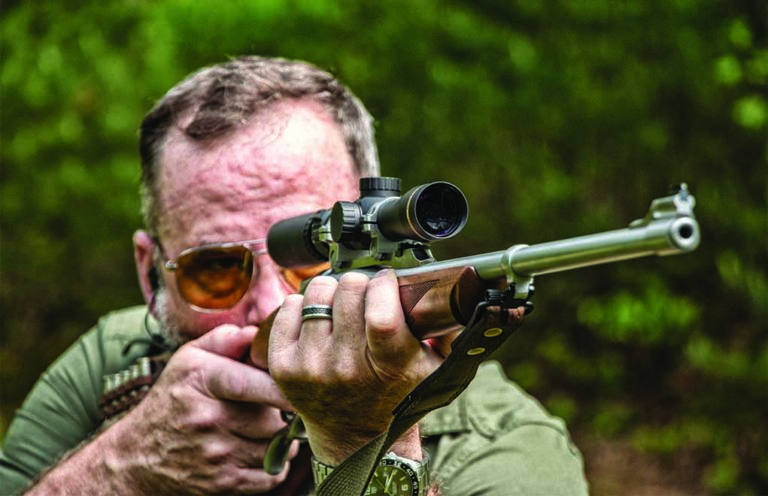
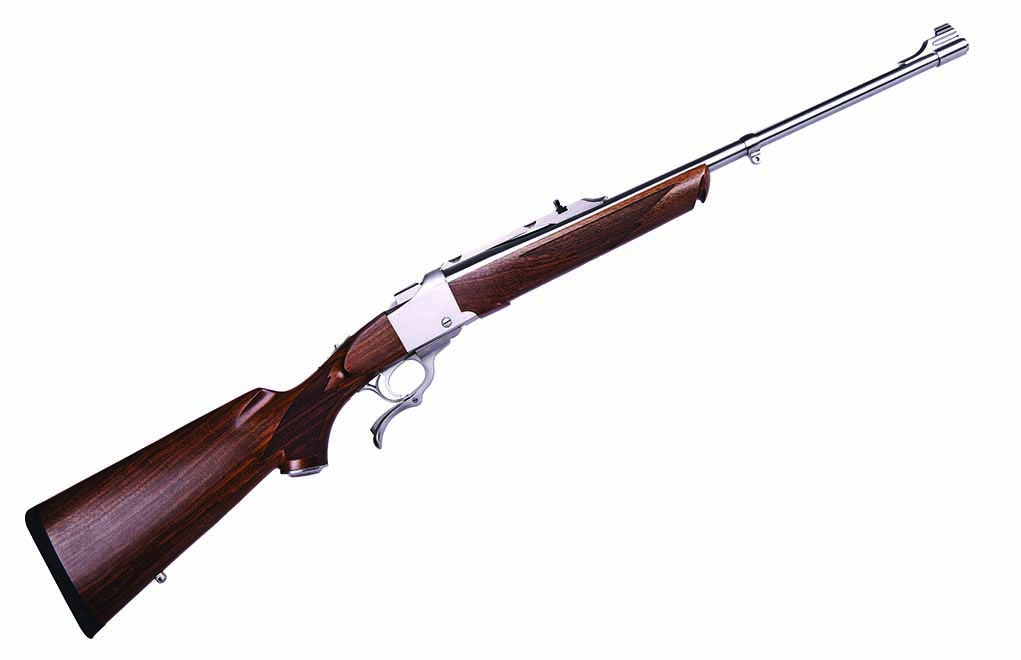
Lipsey’s Ruger No. 1 K1A Light Sporter in .30-30 Winchester offers single-shot elegance.
While the Internet is all ablaze with arguments about the 6.5 Creedmoor and whether anyone should be shooting animals at long range (does anyone know the real definition of “long range”?), in the real world, real hunters are creeping through the timber with a .30-30 and bringing home the venison.
In fact, the .30-30 Winchester has been doing that for more than a century. As effective as the cartridge has been, it is, however, indelibly linked to the lever-action rifle. Fortunately, Lipsey’s thinks outside the box.
Exclusive Offerings
Lipsey’s (Lipseys.com) was formed in 1953 as a wholesale hunting and fishing distributor. The original name of the company was S&S Sporting Goods. In 1977, the business was purchased by Richard Lipsey and family and, in 1993, the name was changed.
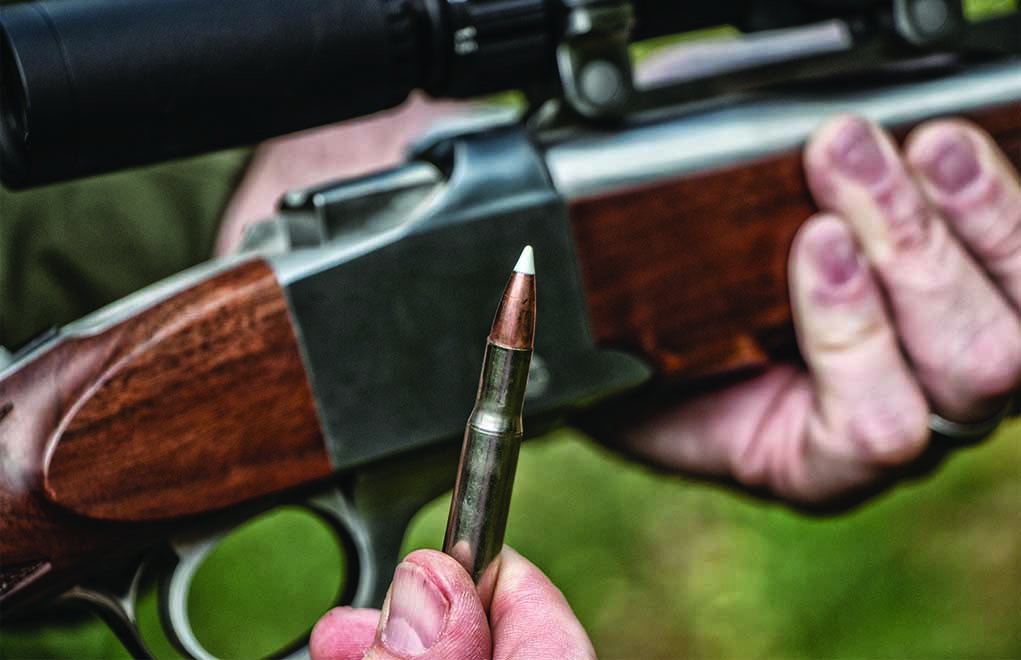
Located in Louisiana, Lipsey’s is one of the largest independently owned, single-location firearms distributors in the United States. The company is very proud of its relationships with firearms manufacturers, and these relationships allow Lipsey’s to frequently offer exclusive/limited-edition firearms.
For the most part, Lipsey’s exclusive firearms are well-thought-out variations of popular models. No, they’re not “Elvis” commemorative guns; they’re guns that have a track record of being appreciated by shooters, but with a different stock or finish or that are quite commonly chambered for a cartridge that’s not a standard offering by the manufacturer. Because shooters and hunters have emotional attachments to some guns and cartridges, this latter type of exclusive offering often has a great appeal.
An excellent example of a popular cartridge that’s missing from most standard lines is the .257 Roberts. It has a cult-like following, but those who are in love with it have limited options when it comes to new guns. Lipsey’s worked with Ruger to develop an exclusive Ruger No. 1 in stainless steel and with a Mannlicher-style stock.
Another .30-30 Winchester Chambering
And that brings us to the subject of this dissertation: Another exclusive Lipsey’s Ruger No. 1 is available chambered for the .30-30 Winchester. Now, what you’re probably wondering is, Why, for the love of Jack O’Connor, would someone chamber a lever-gun cartridge in a single-shot?
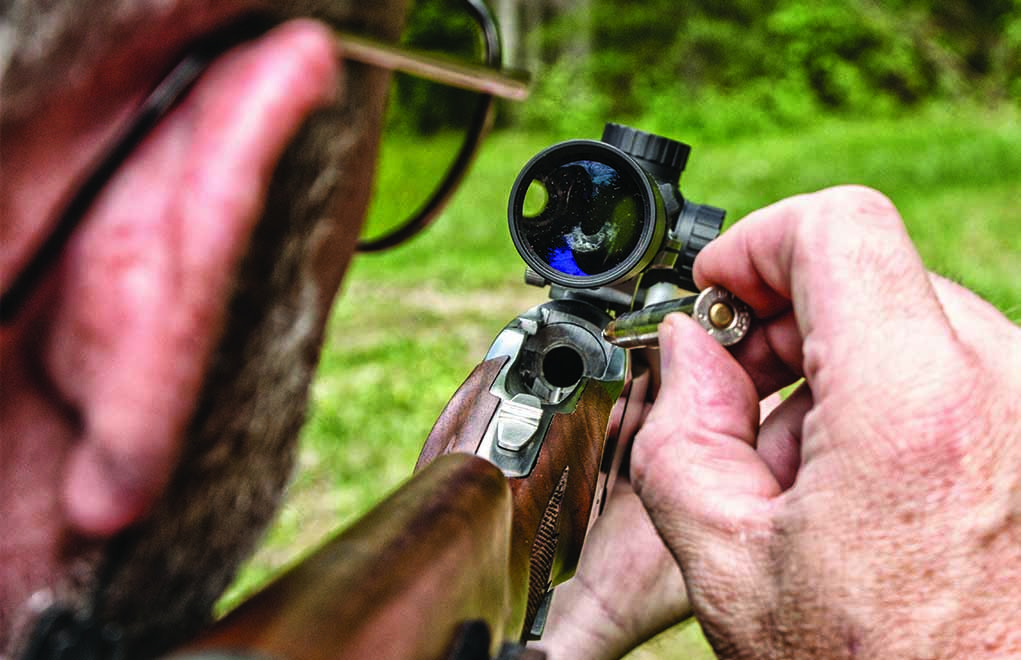
To find the answer, just go back and read the first paragraph. I’ll repeat it here just to make sure you get the point: The .30-30 Winchester has been killing big-game animals all over the world for over a century. African professional hunter Wally Johnson even used a .30-30 to kill lions. Simply put: It works. Yeah, I know, by modern standards, it’s considered a ballistic underperformer … but do you really know the terminal performance capabilities of the .30-30 Winchester?
Testing Effectiveness
A few years back, I tested a variety of Remington Core-Lokt loads at 100 yards in 10 percent ordnance gelatin. The goal was to reveal the effectiveness of what is now considered an antiquated bullet style.
I tested loads for the .243 Winchester, .270 Winchester, 7mm Remington Magnum, .308 Winchester, .30-06 Springfield and .338 Winchester Magnum. The average penetration depth was 19.25 inches, and the average expansion was 1.95 times original bullet diameter.
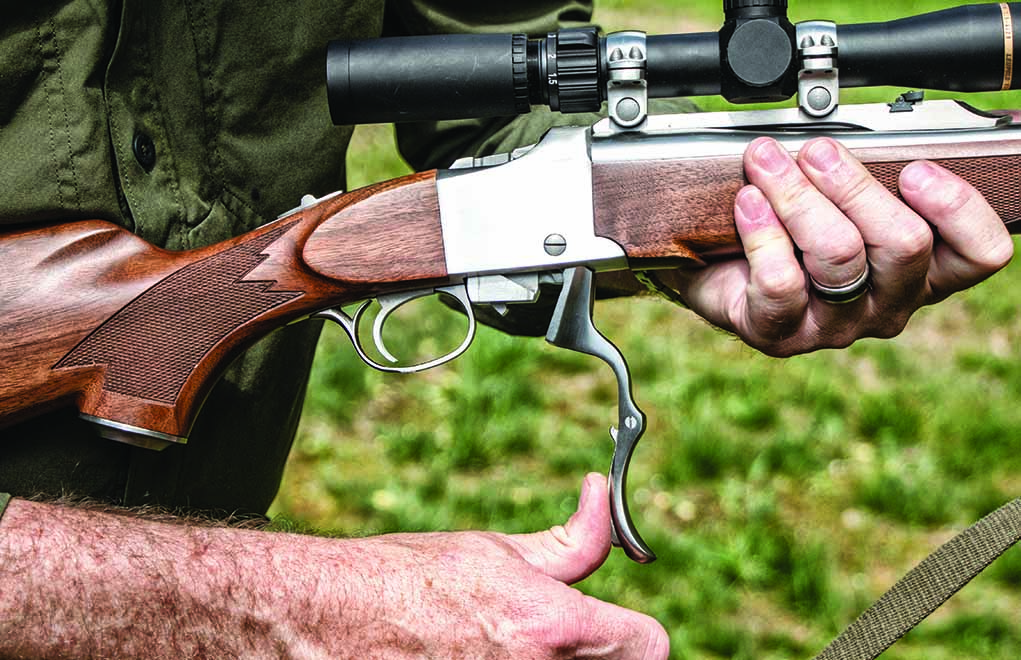
The old .30-30 Winchester with a 150-grain Core-Lokt bullet penetrated 3.75 inches deeper than the average and expanded to 1.72 times 0.30-caliber. For those who do not own a calculator or might be mathematically challenged, that .30-caliber bullet had an expanded diameter of 0.53 inch. And, by the way, the .30-30 Winchester load expanded just as much as the .338 Winchester magnum load—and penetrated deeper!
You’re probably thinking that while the .30-30 might be effective at close range, those blunt-nosed bullets have a trajectory as if you’re throwing a couch. Well, you’re right: With a real-world muzzle velocity of about 2,400 fps, a .30-caliber bullet with a ballistic coefficient of under 0.200, when sighted dead-on at 100 yards, will drop 8 inches at 200 yards and 30 inches at 300 (Hafþór Júlíus Björnsson—the strongest man in the world—might, indeed, throw a couch flatter than that!).
The Ruger No. 1 Logic
However, if you could load a bullet such as a Nosler 125-grain AccuBond to, let’s say, 2,550 fps, all of a sudden, the .30-30 Winchester takes on a different personality. The thing is, in its most common form—which is a lever-action rifle—you can’t use pointed bullets such as the Nosler 125-grian AccuBond.

And there lies the beauty of a Ruger No. 1 in .30-30 Winchester: You can use pointy, highly aerodynamic and more terminally efficient bullets that will shoot flatter and deliver a higher level of terminal performance.
For example, if you push a 125-grain Nosler AccuBond to 2,550 fps and sight the rifle dead-on at 100 yards, that bullet will only drop 5 inches at 200 yards and only 18 inches at 300. Just as importantly for the hunter, at 200 yards, that bullet will be traveling almost twice as fast as a 150-grain round-nosed bullet and will deliver more than twice the energy. In addition, a 150-grain round-nosed bullet fired from a .30-30 Winchester will not impact with a fast enough velocity at 300 yards to initiate expansion.
So, there you have the logic behind the concept of a Ruger No. 1 chambered for the .30-30 Winchester. Sure, you could still shoot all the commercial factory .30-30 Winchester loads—even the flatter-shooting LeverEvolution options from Hornady. But, with the Ruger No. 1, you have the option of custom-loading just about any .30-caliber bullet you’d like.
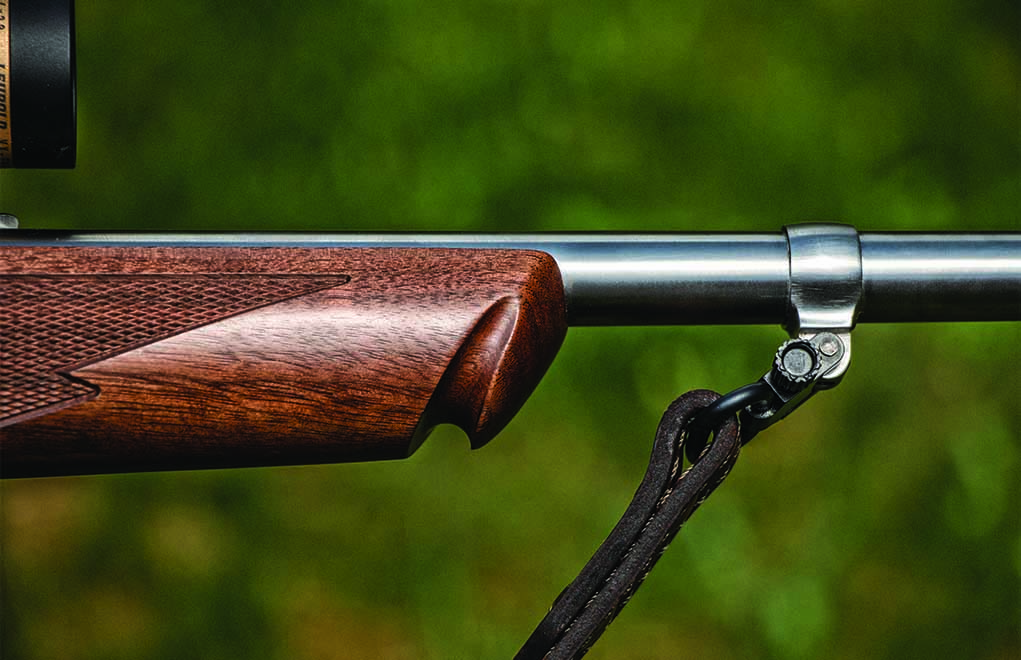
When I found out Lipsey’s had teamed with Ruger to offer an Exclusive No. 1 chambered for the ,30-30 Winchester, I had to have one. With all the metal in stainless steel contrasting with rich walnut, it’s a visually appealing rifle (that’s gun writer speak for saying it’s damned beautiful). The rifle is fitted with a quarter rib that includes a folding leaf rear sight and integral scope mounts. There’s also an elevated gold-bead front sight. It has the very attractive, grooved Alexander Henry forend and a slim, 22-inch stainless steel barrel with a 1:10 twist. As with all Ruger No. 1 rifles, scope rings (medium height) are included, and out of the box, it weighs 7 pounds.
Scoping the Ruger No. 1
The first priority was to scope this rifle, because my old eyes just don’t work as they used to with open sights. One of the issues with scoping a Ruger No. 1 deals with eye relief.
Because the rings attach directly to the quarter rib, they place the riflescope a bit far forward. If you’re one of those who really stretches their neck forward when they shoot, this is not an issue. However, “turtle-necking” is not conducive to accurate or snap shooting. Your head should remain erect when you shoot a rifle, and your neck muscles should be relaxed. The hurdle for me was to find a riflescope offering enough eye relief so that I could shoot the Ruger No. 1 properly and comfortably.
An Aside: The VX-Freedom Scout
Ironically, I’d just received a new Leupold riflescope to test: the renovated VX-II 1.5-4X28 Scout Scope ( now called the VX-Freedom Scout). In truth, this isn’t a scout scope; scout scopes should have a minimum eye relief of about 10 inches. The VX-Freedom has 6.9 inches of eye relief on low power and 6.0 inches on the highest magnification. As it turned out, this is just about the ideal eye relief for the Ruger No. 1.
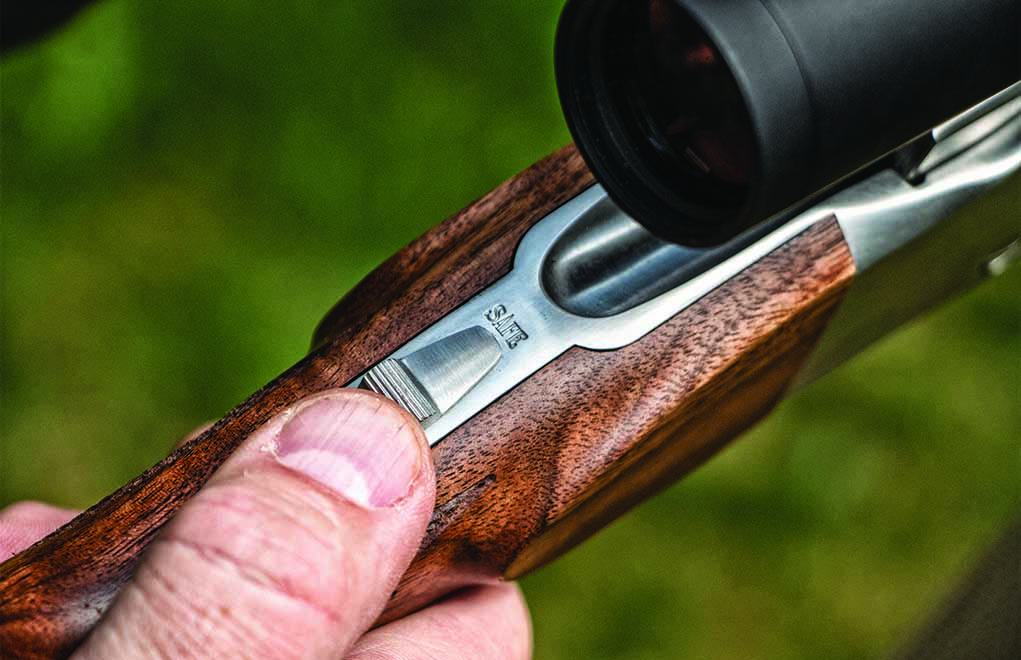
I mounted it in the rings supplied with the rifle, but it was too high for optimum use. So, I had to order a set of low stainless rings from Ruger. Mounted in those, the VX-Freedom was superbly suited to the Ruger No. 1.
This is a fantastic little riflescope. It’s exceptionally clear, adjustments are spot on, and it holds zero without fail. Just as importantly, it’s compact. At fewer than 10 ounces, it’s very light for a variable-powered optic. The power range was also ideal when paired with my intentions for this rifle. I wanted to use it for deer and bear here, in West Virginia. With this riflescope set at 1.5x, I could easily execute a swift snap shot on a bounding whitetail; and, at times of reduced light, or if I needed to reach out a bit, 4x magnification would suffice.
125-Grain Nosler AccuBond Handloads
I didn’t even mess with shooting factory ammunition for this rifle. My intention all along was to load the excellent 125-grain Nosler AccuBond. I’ve used it in Africa with great success out of a .30 Remington AR bolt-action rifle on a variety of species. I was set on it as the primary projectile for this rifle. I took some once-fired, nickel-plated Federal brass and dropped in 33 grains of Benchmark powder ahead of a Remington 91/2 primer. I then seated the bullet so it was just off the lands. The first three shots clustered into a nice group measuring 0.74 inch, center to center.
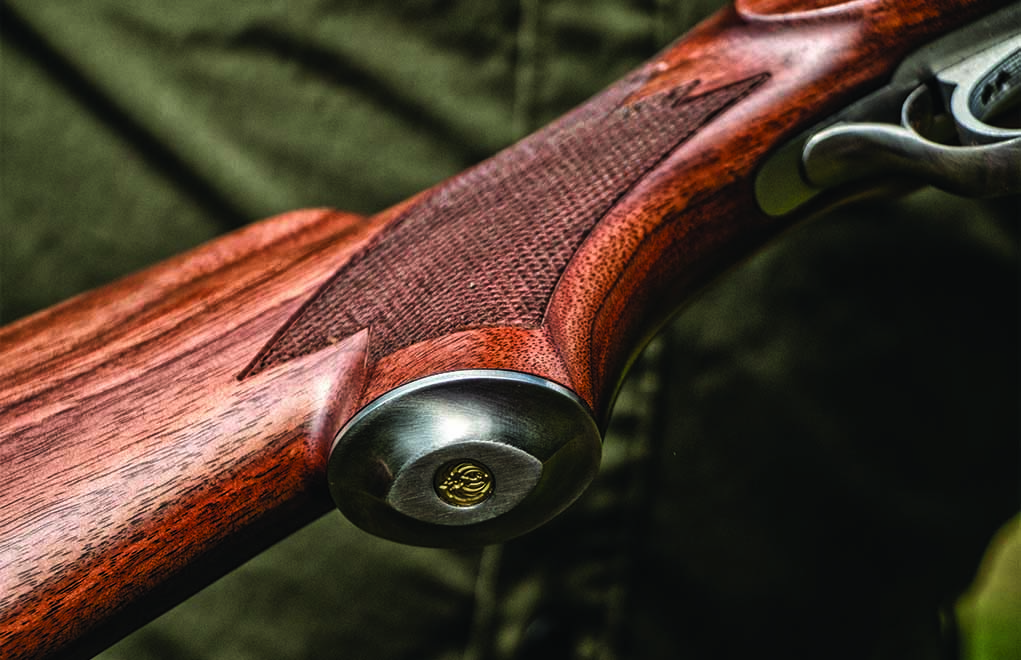
I loaded up 40 more rounds, fired five to zero the rifle 1 inch high at 100 yards, and fired several more at 200 yards to check trajectory and precision. At 200 yards, the bullets dropped about 3 inches, and a three-shot group measured 1.47 inches, center to center. It was one of the easiest and fastest load workup and zeroing sessions I’ve had. I just knew this rifle and I were destined for greatness.
I was wrong.
As it turned out, I hunted the entire West Virginia deer season, and the only deer with antlers I put eyes on was while I was hunting with my daughter. I didn’t even have a rifle with me (after all, it was her hunt).
However, for me, there were two positive takeaways. The first was that Lipsey’s exclusive Ruger No. 1 in .30-30 Winchester and I sure looked good in the timber. The second? Well, there’s always next year.
Consider This
There should be three takeaways for you. The first is that overlooking the ballistic potential of the .30-30 Winchester as a big-game hunting cartridge is a mistake. For those of us who hunt on our hind legs and believe success is found with feet—not fps—the .30-30 Winchester will get the job done.
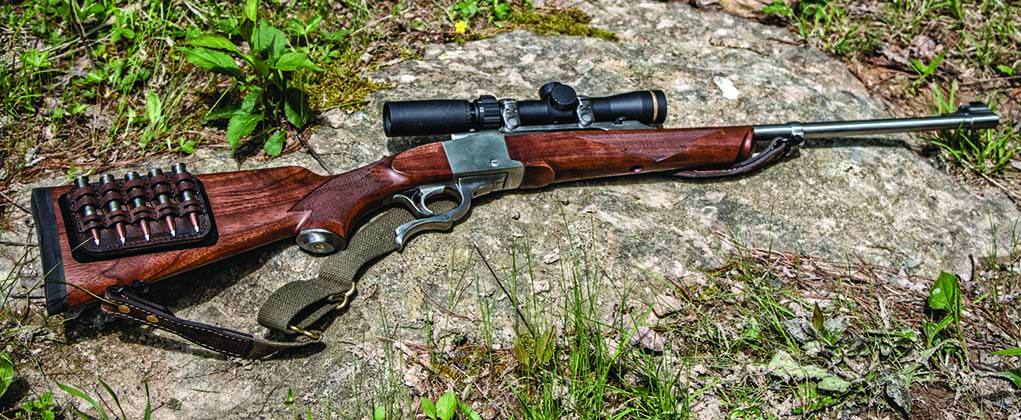
The second is that this exclusive-edition Ruger No. 1 is a fine-shooting and good-looking rifle your hunting buddies will covet.
The third is that visiting the Lipsey’s website on a regular basis is a good idea; you never know what the next exclusive gun it offers will be. It just might be a rifle you’ve always wanted but that’s now chambered for a cartridge you cannot live without.
Lipsey’s Ruger No. 1 Specs
Manufacturer: Ruger
Distributor: Lipsey’s
Model: K1A Light Sporter
Action: Single shot
Chambering: .30-30 Winchester
Finish: Brushed stainless
Stock: Walnut
Weight: 7 lbs.
Capacity: 1
Barrel: 22 in., 1:10 twist
Overall Length: 38.5 in.
Sights: Gold-bead front, folding leaf rear
Safety: Two position, tang mounted
Accessories: Stainless steel, medium-height scope rings
MSRP: $1,919
For more information on the Libsey's Ruger No.1, please visit ruger.com.
The article originally appeared in the December 2019 issue of Gun Digest the Magazine.
Get More Ruger Info:
- Great Ruger Guns
- Best Ruger .22 Handguns
- Ruger LCRx .357 Magnum
- Ruger No. 1
- Ruger Precision Rifle
- Ruger Redhawk
- Ruger Super Redhawk
- Ruger Blackhawk
- Ruger Single Six
- Ruger 10/22
- Ruger LCR
- Ruger 77/22
- Ruger 77/44
- Ruger SR1911
- Ruger Hawkeye
- Ruger Mark IV
- Ruger SR-556
- Ruger LCP II
- Ruger American Magnum
- Ruger American Rifle
- Ruger Gunsite Scout Rifle
- Ruger SR-762
- Ruger Red Label
- Ruger SR40
- Ruger Single Nine
- Ruger P345
- Ruger 57
- PC Carbine Chassis

Next Step: Get your FREE Printable Target Pack
Enhance your shooting precision with our 62 MOA Targets, perfect for rifles and handguns. Crafted in collaboration with Storm Tactical for accuracy and versatility.
Subscribe to the Gun Digest email newsletter and get your downloadable target pack sent straight to your inbox. Stay updated with the latest firearms info in the industry.

![Best Concealed Carry Guns In 2025 [Field Tested] Wilson Combat EDC X9S 1](https://gundigest.com/wp-content/uploads/Wilson-Combat-EDC-X9S-1-324x160.jpg)


![Best 9mm Carbine: Affordable PCCs [Tested] Ruger Carbine Shooting](https://gundigest.com/wp-content/uploads/Ruger-Carbine-Shooting-100x70.jpg)
![Best AR-15: Top Options Available Today [Field Tested] Harrington and Richardson PSA XM177E2 feature](https://gundigest.com/wp-content/uploads/Harrington-and-Richardson-PSA-XM177E2-feature-100x70.jpg)

Good read. I’m a U.S. Navy veteran living in Illinois. Mine is another state that just went staightwall for deer season; oh, and single round only. I can hunt with my Marlin .357 lever gun with the tube blocked, or my Savage 24V .357 over 20 which lets me select a slug up close. I’m originally from the northeast and this beautiful example would be an excelent hunter there. I have been reading about the mid-west market for the best straightwall hunting cartridge, I’d love to see Lipsey’s do a run just like these in .360 Buckhammer. With the current Remington corelokt ammo it is a good 150-175 yd round out of a capable rifle. A 160 gr Cutting Edge ER Raptor monolithic copper 0.335 BC leaving @ 2650 sighted a 200 yds drops 4 inches @ 250 yds and 10 inches @ 300 yds. At 300 yards the bullet still has plenty of velocity to drop a deer. Its a long shot for most even without a straightwall limitation. If your not a copper bullet fan theres also Fury 158 gr soft point spitzer With a 0.24 BC leaving @ 2650 would be good to 275 ys with an 8 inch drop. I would offer that this currenly would be “THE” flatest shooting 300 yd deer rifle legal to take anywhere in the mid-western states. I started looking for a .30-30 to rebarrel but its not the cheapet route. I want two, lets get a Lipsey’s special going on these. Throw in a versacarry for buckhammers and a proper 300yd scope.